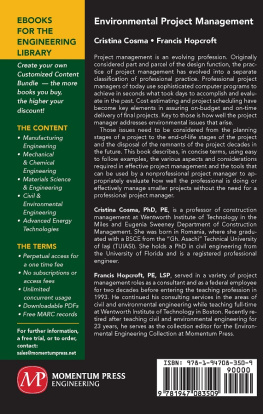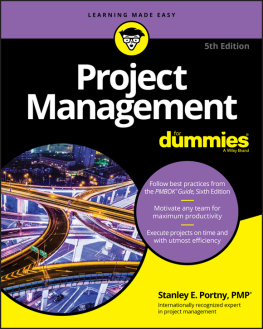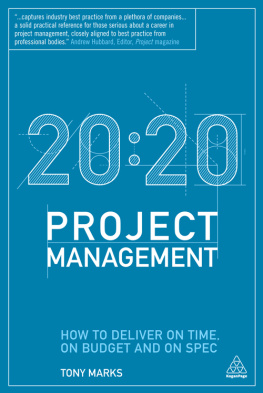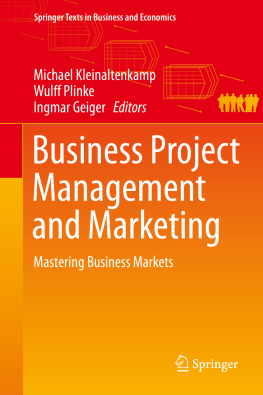Project Management for Scientists and Engineers
By: Merrie Barron and Andrew Barron
Online:
This selection and arrangement of content as a collection is copyrighted by Merrie Barron and Andrew Barron .
It is licensed under the Creative Commons Attribution License: http://creativecommons.org/licenses/by/3.0/
Collection structure revised: 2009/10/14
For copyright and attribution information for the modules contained in this collection, see the "" section at the end of the collection.
Chapter 1. Becoming an Accidental Project Manager
1.1. Congratulations... you're the project manager!
Note
The following is based on, and adapted from, the premise of The Education of Jerry by J. Davidson Frame in Managing Projects in Organization , John Wiley, New York (1995).
John picks up the phone before the second ring. It's his boss, Mike Johnson. "John, I'd like you to stop by my office right after lunch today."
John is not really sure why the boss is calling him into his office, which makes for a long lunch hour. He knows he's been doing a good job lately. As a matter of fact, he knows that he's probably the most technically capable person in the group. John's mind begins to race. Maybe it's an award? Could it be a promotion? Countless positive and negative scenarios run through John's overworked mind until one o'clock finally rolls around and he cautiously enters Mike's office.
"John, I've got some great news for you," Mike begins. "As you know our company is developing a business-to-business (B2B) e-commerce system. As part of that initiative, Id like you to explore the possibility of integrating our purchase order process into the B2B e-commerce system."
Before John could say anything Mike continued, "Congratulations, John, I'm assigning you as the project manager. Use anyone you need to help you; the important thing is to give me a report on your findings within a month. Your preliminary investigation will give us an idea of how we should go about computerizing the order processing function at BizNex Inc., and we need that information in time for our next quarterly executive meeting.
John was delighted with being made the project manager. The B2B project was the largest BizNex Inc. had ever implemented, and the order processing subproject was one component of the larger B2B project.
Once developed, the B2B system would enable BizNex Inc. to establish seamless connections with its vendors. Although BizNex Inc. already used computers in its order processing system, the bulk of transactions entailed manual interventions. This caused the order fulfillment function to operate slowly and led to errors because the manual interventions were error prone. With the new B2B system, customers would enter orders using the internet. Once captured by the B2B e-commerce system, the orders would be processed entirely by the computer.
This project provided John with his first real management experience. He was hired by BizNex Inc. straight after completing his MBA degree at Rice University. During his first two years at BizNex Inc., he was assistant to Mike Johnson, Vice President of Operations. Despite the high profile of his job and the exposure it gave him to high-level decision making within the company, John felt that he wanted to become more involved in the decision making process. With the order processing subproject, he was being given something tangible to do with significantly more responsibilities.
John determined to do a good job on his project. He put together a task list. From his experiences since leaving college he knew it was important to assemble the "Project Staff. After careful thought he decided he needed a business analyst, a procurement specialist, an internet expert, an e-commerce expert, a logistics expert, and a representative from each of the companys five divisions. He figured that he and the business analyst would be the only full time resources on the project. However, the other team members would need to make a fairly substantial commitments to the project if it is to be completed in a month. He decided that each would have to dedicate 25% of their time to the project.
Since there would be five divisions represented, John planned that each of the five divisional representatives would write a section of the study, detailing the impacts of the order processing system on their operations and defining whatever order processing needs they have. The business analyst would capture and document the business requirements and write the technical portions of the report. Johns function would be to coordinate the efforts of the others and to integrate all the pieces into a cohesive plan.










